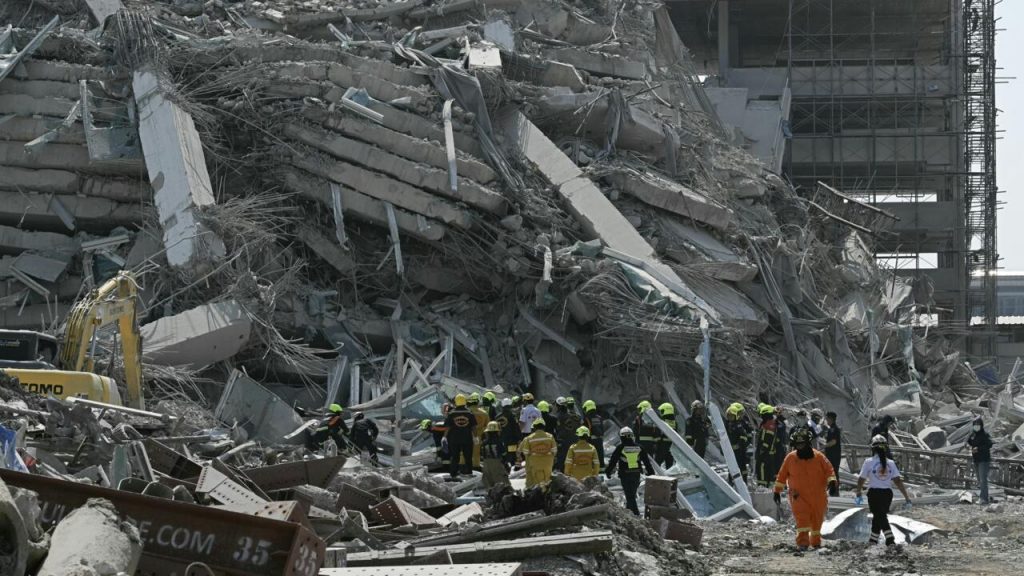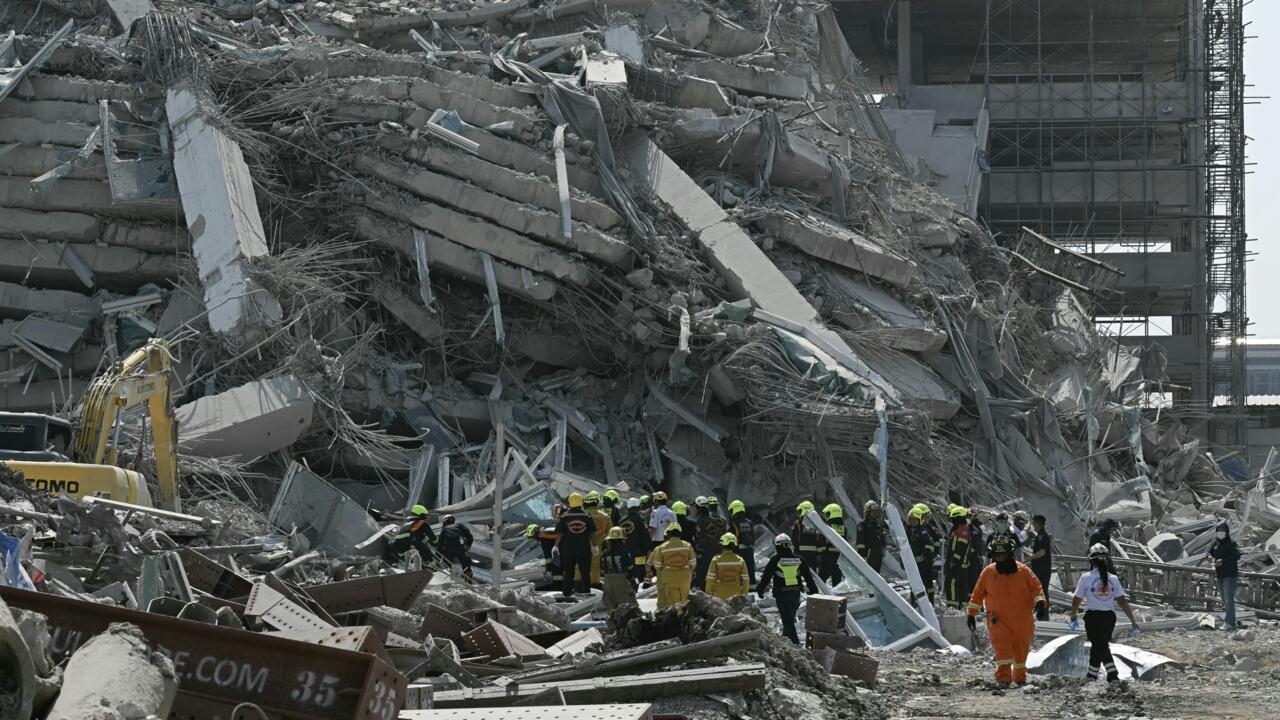Below is an article about the Myanmar earthquake that occurred on March 28, 2025, crafted to be informative, engaging, and optimized for indexing on Google News. The content is based on the provided search results and adheres to the guidelines for factual reporting.

Powerful 7.7-Magnitude Earthquake Rocks Myanmar, Tremors Felt Across Southeast Asia
March 28, 2025 | 02:33 AM PDT
A devastating 7.7-magnitude earthquake struck central Myanmar on Friday, March 28, 2025, causing widespread damage and sending shockwaves across Southeast Asia. The epicenter, located approximately 16 kilometers north-northwest of Sagaing and 17.2 kilometers from the city of Mandalay, unleashed chaos as buildings collapsed, roads buckled, and residents fled in panic. The tremors were felt as far away as Bangkok, Thailand, where a skyscraper under construction collapsed, trapping dozens of workers.
Earthquake Details and Immediate Impact in Myanmar
According to the United States Geological Survey (USGS), the quake occurred at a shallow depth of 10 kilometers (6.2 miles), amplifying its destructive power. A subsequent 6.4-magnitude aftershock further compounded the crisis. In Mandalay, Myanmar’s second-largest city with a population of about 1.5 million, social media posts revealed collapsed buildings and debris-strewn streets. The historic Ava Bridge, a 90-year-old structure connecting Mandalay and Sagaing, crumbled into the Irrawaddy River shortly after the initial jolt.
In the capital, Naypyidaw, damaged pagodas and cracked roads bore witness to the quake’s force. An officer from the Myanmar Fire Services Department told Reuters, “We have started the search and going around Yangon to check for casualties and damage. So far, we have no information yet.” Myanmar’s ruling junta declared a state of emergency across six regions and made a rare request for international humanitarian aid, signaling the severity of the situation.
Bangkok in Crisis: Skyscraper Collapse and Evacuations
The earthquake’s reach extended hundreds of miles, shaking the Thai capital of Bangkok, where a 30-storey building under construction collapsed, trapping 43 workers, according to police and medics. Rescue operations are underway, with Thailand’s National Institute of Emergency Medicine reporting at least one fatality and dozens rescued from the rubble near the bustling Chatuchak Market. Bangkok city hall declared the capital a disaster area, and the Stock Exchange of Thailand suspended trading for the afternoon session.
Governor Chadchart Sittipunt confirmed damage to multiple high-rise buildings, while residents recounted scenes of panic as alarms blared and people evacuated swaying structures. “We felt the quake for about one minute and then we ran out of the building,” a Yangon resident told CNN, a sentiment echoed by those in Bangkok.
Regional Tremors and Global Response
The quake’s effects rippled beyond Myanmar and Thailand. Tremors were reported in Dhaka, Bangladesh, 597 kilometers from the epicenter, as well as in China’s Yunnan and Sichuan provinces, where minor damage and injuries occurred in border areas like Ruili. In India, mild shaking was felt in Kolkata, Imphal, and Meghalaya’s East Garo Hills, prompting concern from Prime Minister Narendra Modi. “India stands ready to offer all possible assistance,” Modi posted on X, directing authorities to coordinate with Myanmar and Thailand.
The USGS and Germany’s GFZ Centre for Geosciences classified the event as a shallow, high-impact quake, with some reports, such as from China’s CENC, estimating its magnitude as high as 7.9. The Sagaing Fault, a major tectonic feature running through central Myanmar, is known for seismic activity, with six quakes of 7.0 magnitude or higher recorded between 1930 and 1956.
A Nation Vulnerable Amid Crisis
Myanmar, already grappling with a civil war and crumbling infrastructure, faces heightened vulnerability. Experts note that rapid urban development, poor planning, and aging structures exacerbate the risks of natural disasters. The collapse of religious shrines in Naypyidaw and parts of Mandalay’s former royal palace underscores the cultural toll, while the lack of immediate casualty reports reflects the challenges of communication in a conflict-ridden nation.
In Thailand, Prime Minister Paetongtarn Shinawatra declared a state of emergency in Bangkok, mobilizing resources to aid rescue efforts. Airports in the capital, however, remain operational, according to the Thai civil aviation department, offering a lifeline for potential aid and evacuations.
What’s Next?
As rescue teams work tirelessly in Bangkok and Myanmar’s emergency response unfolds, the full scope of the disaster remains unclear. The international community watches closely, with offers of support pouring in. For a region prone to earthquakes but ill-prepared for their consequences, today’s events serve as a stark reminder of nature’s unpredictability and the urgent need for resilience.
Stay tuned for updates as this story develops.






Leave a Reply